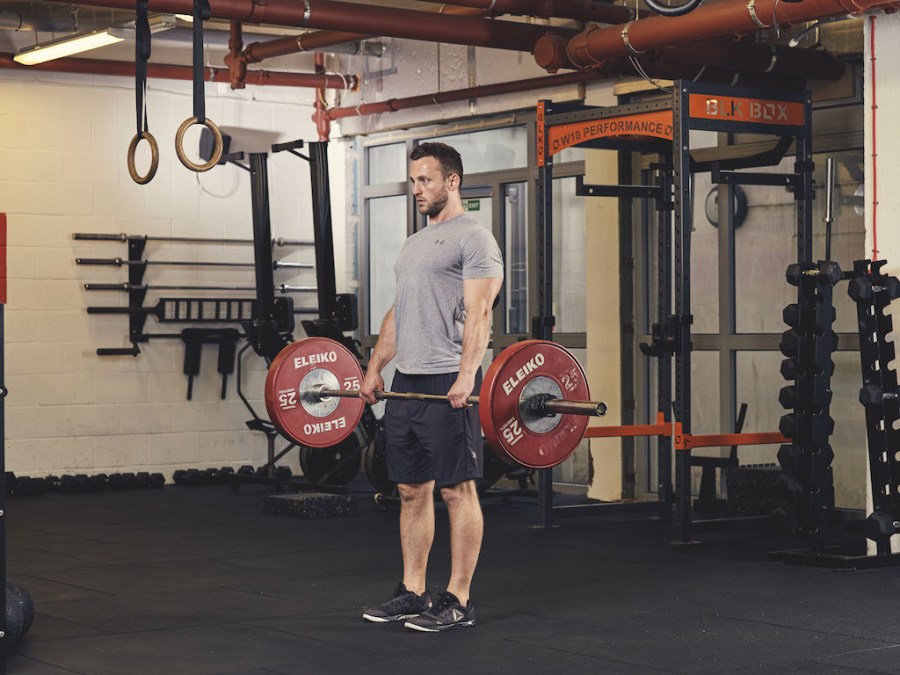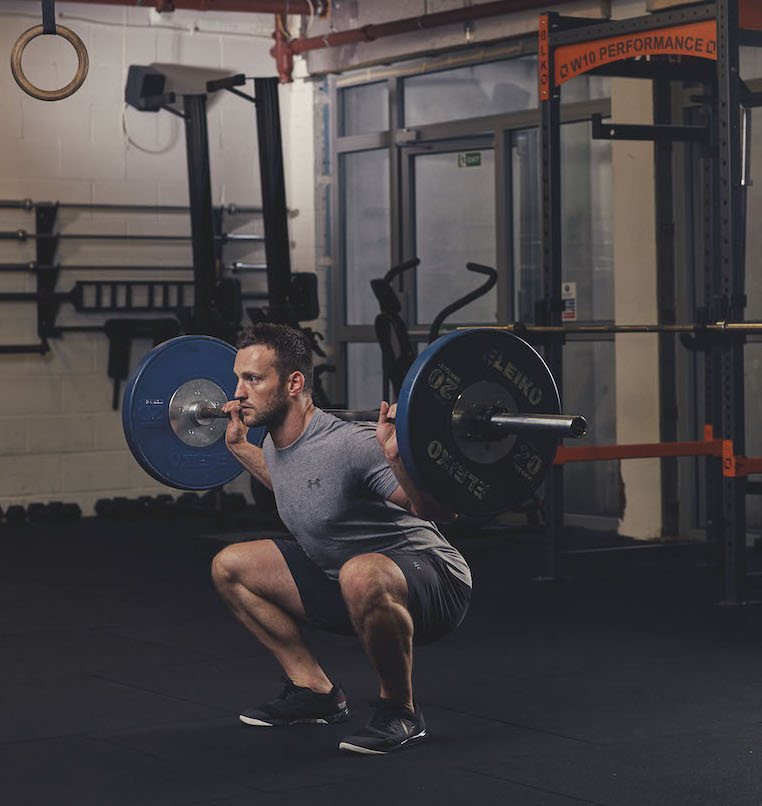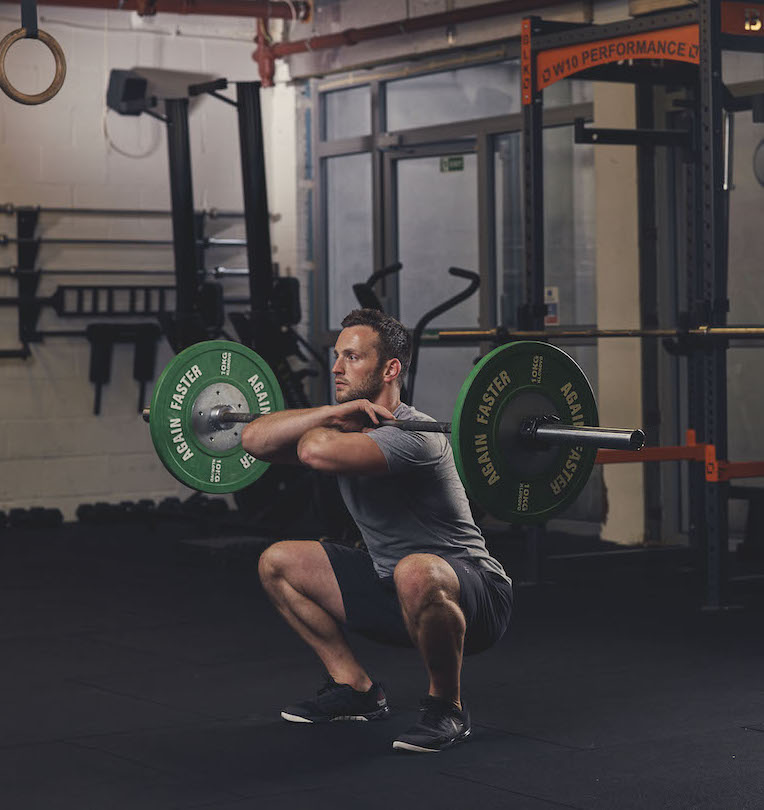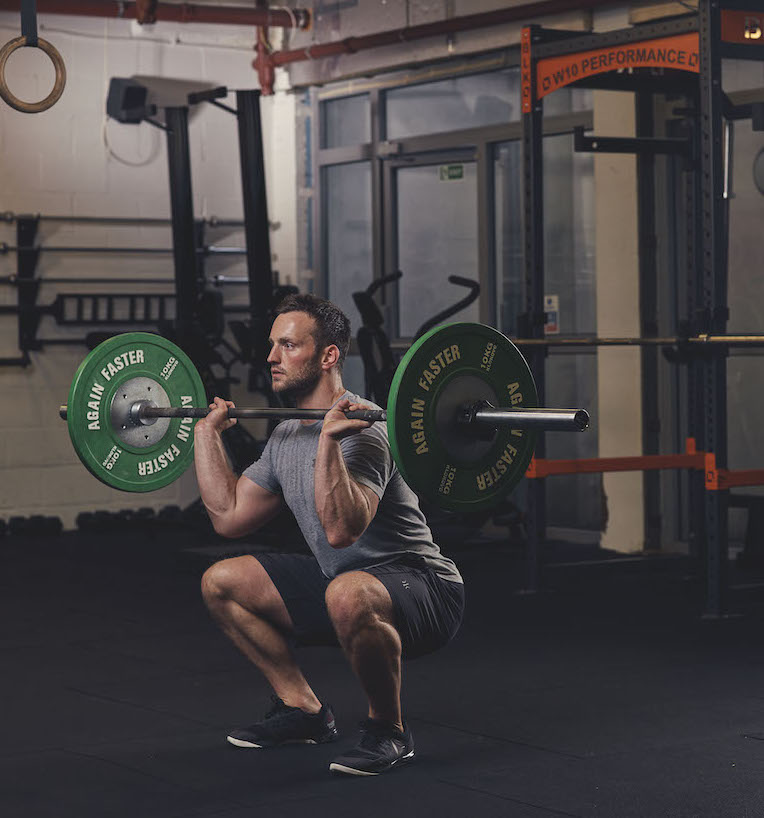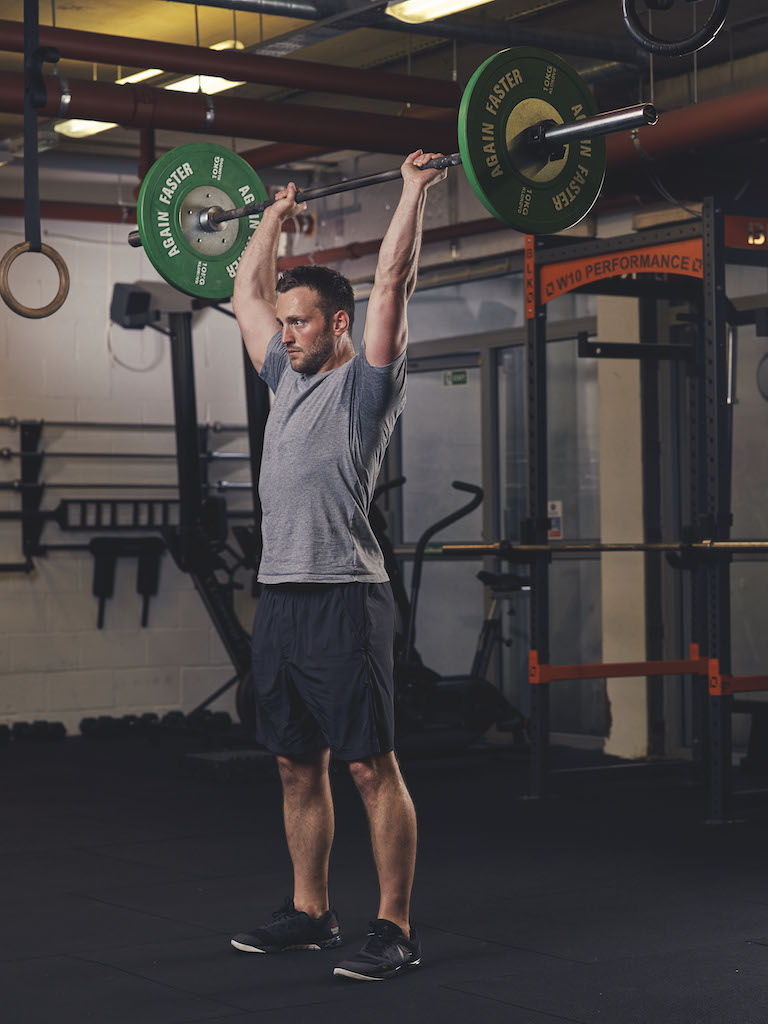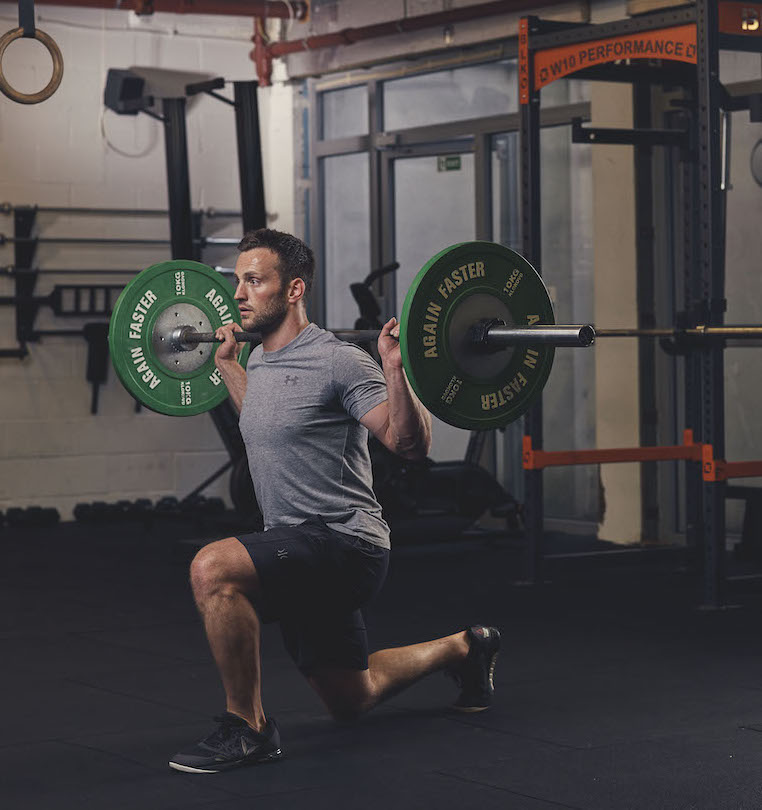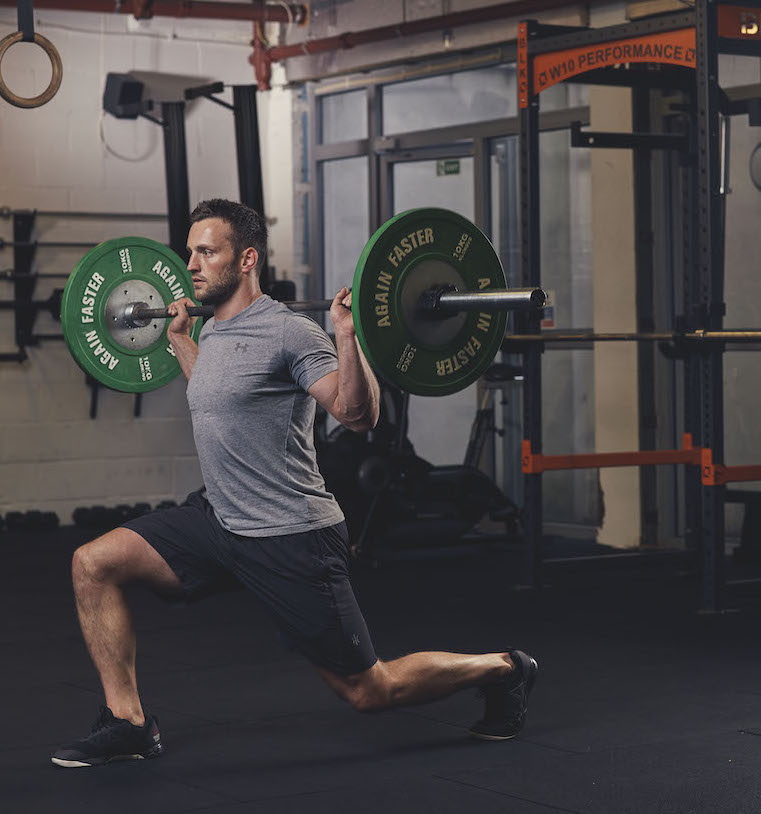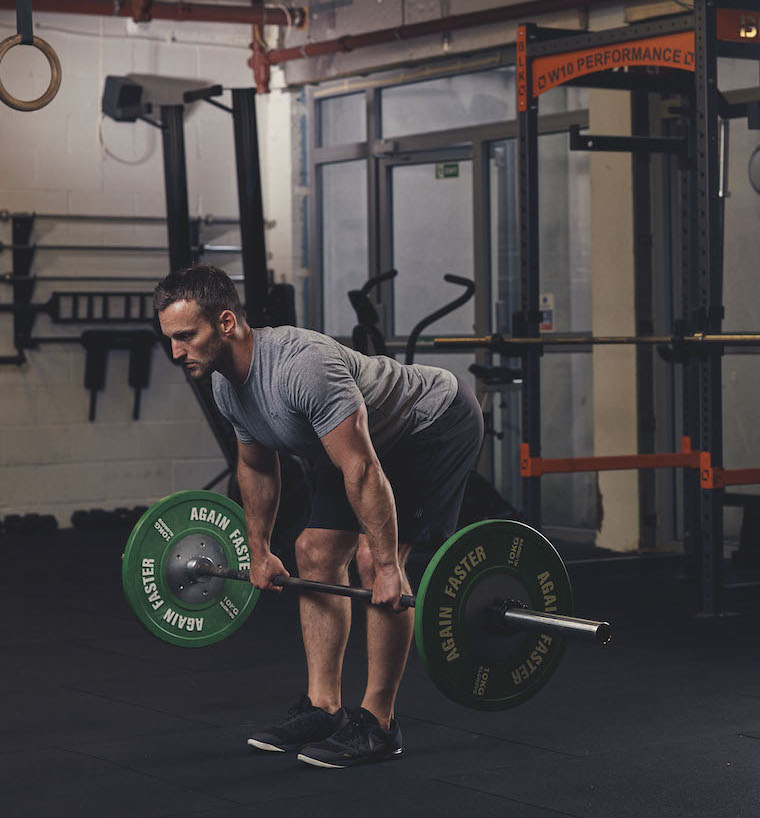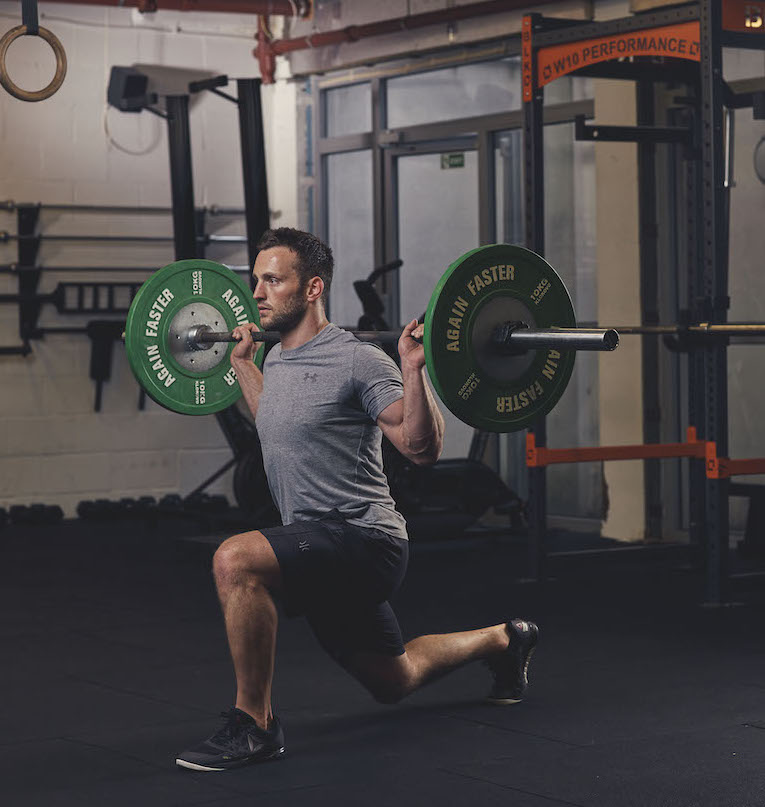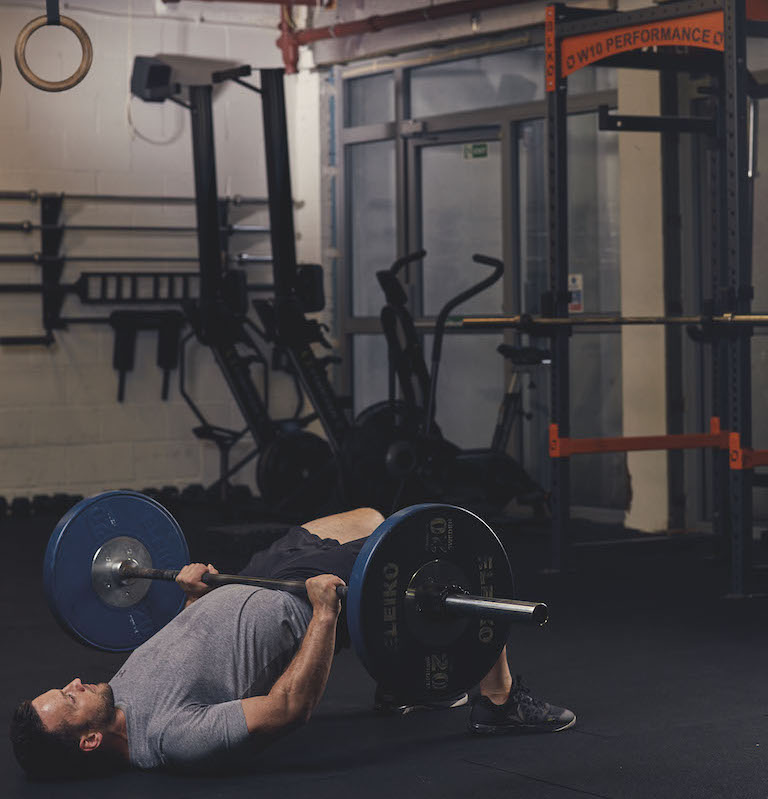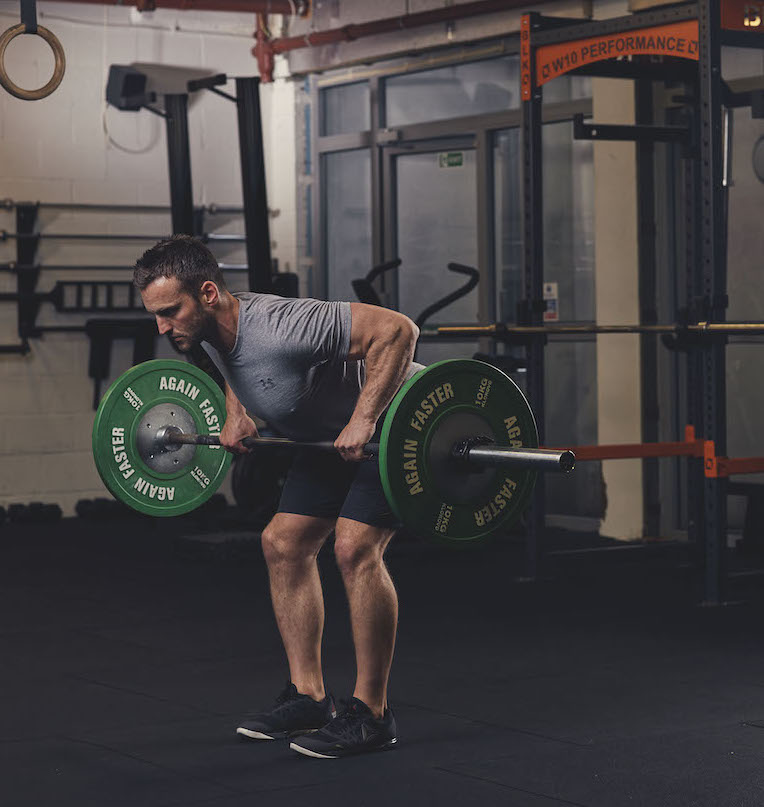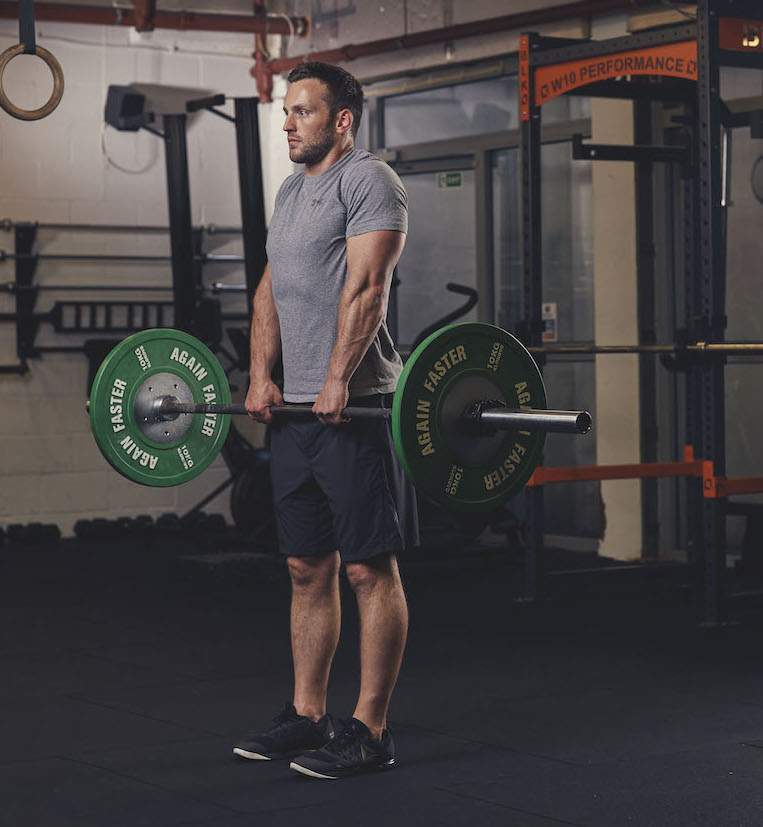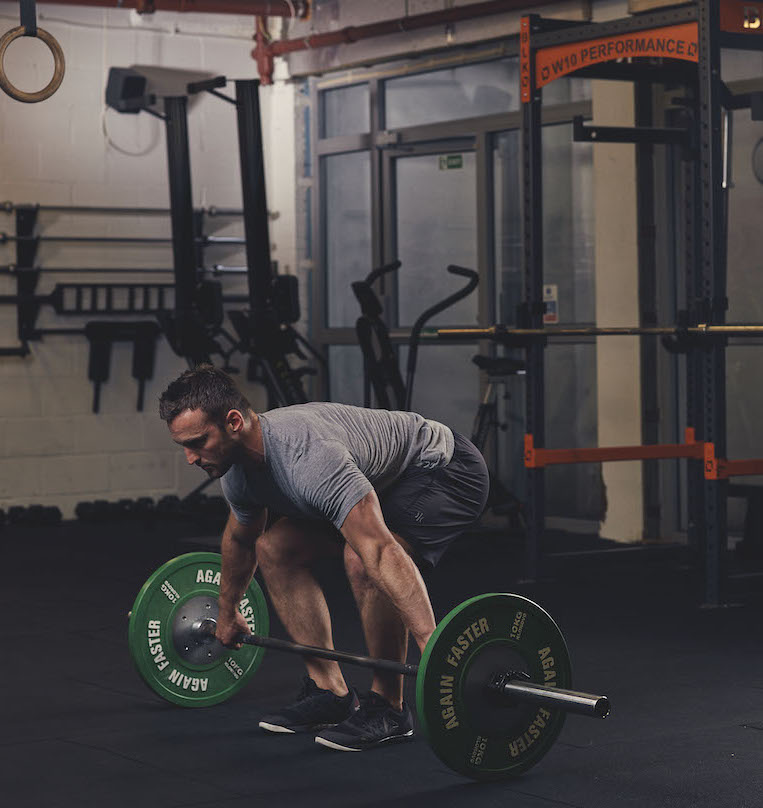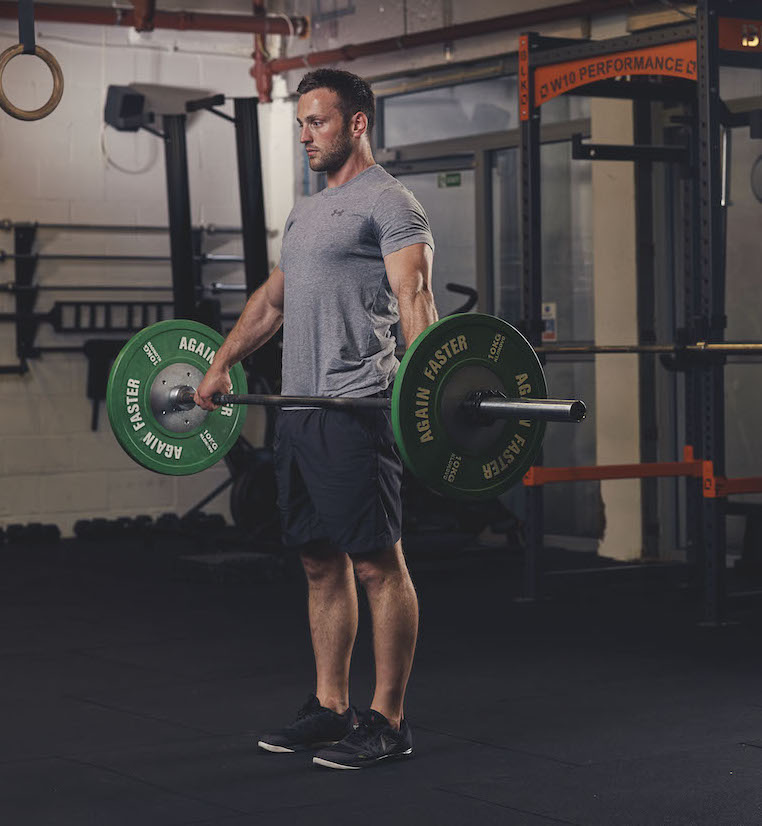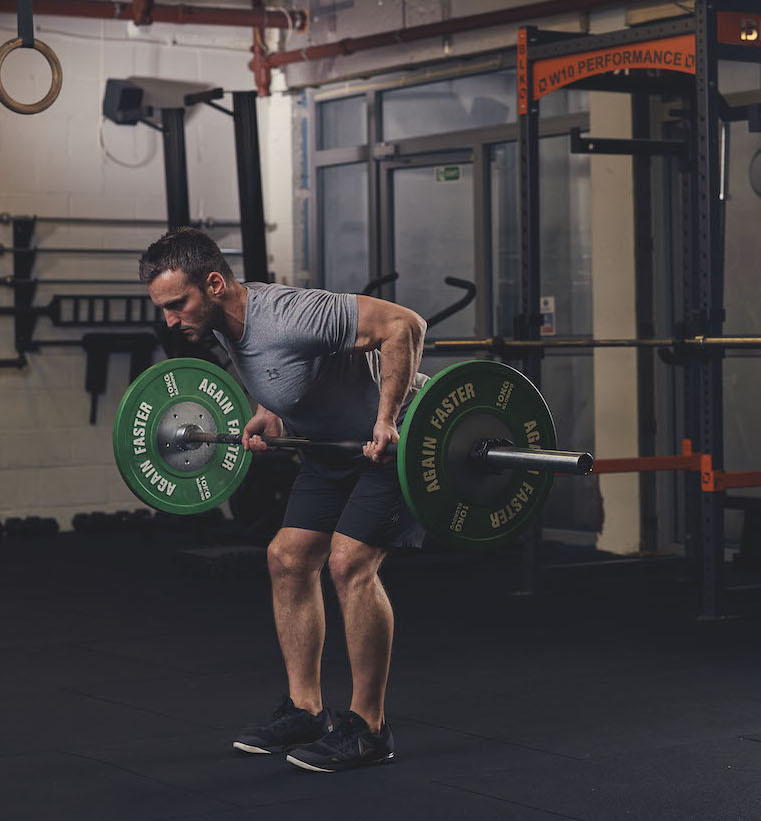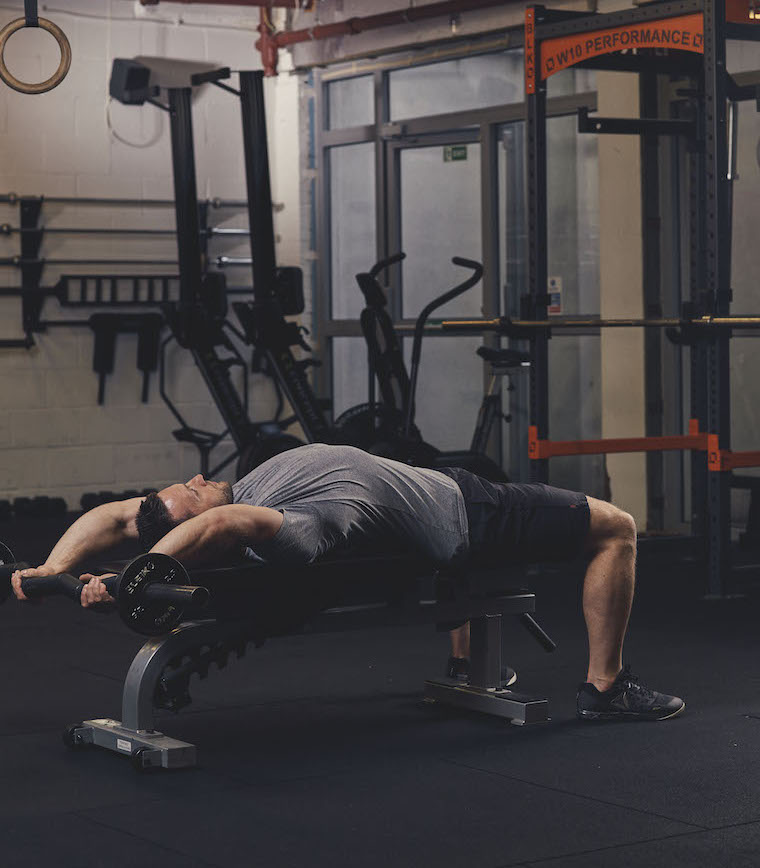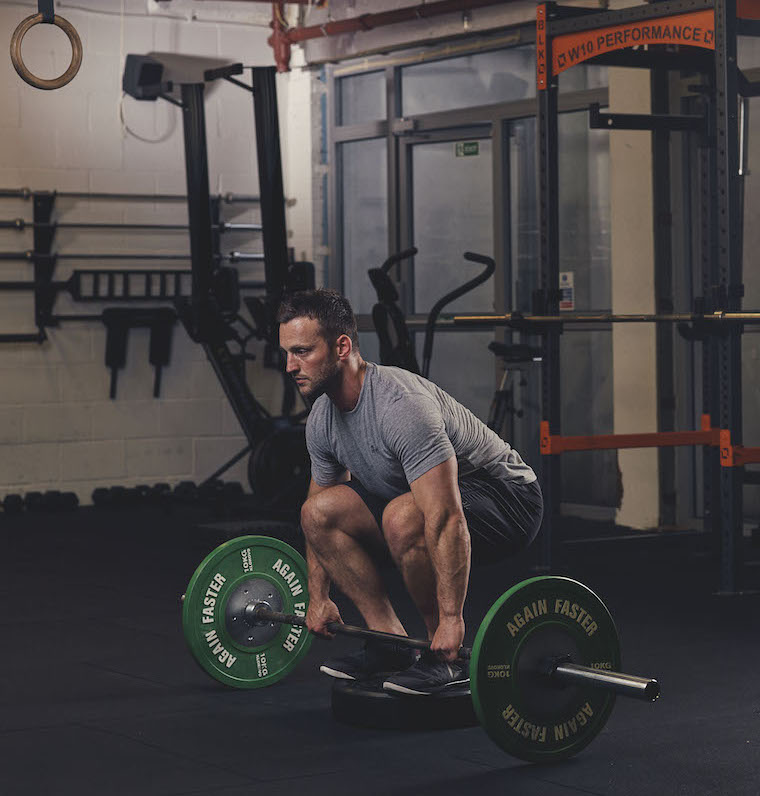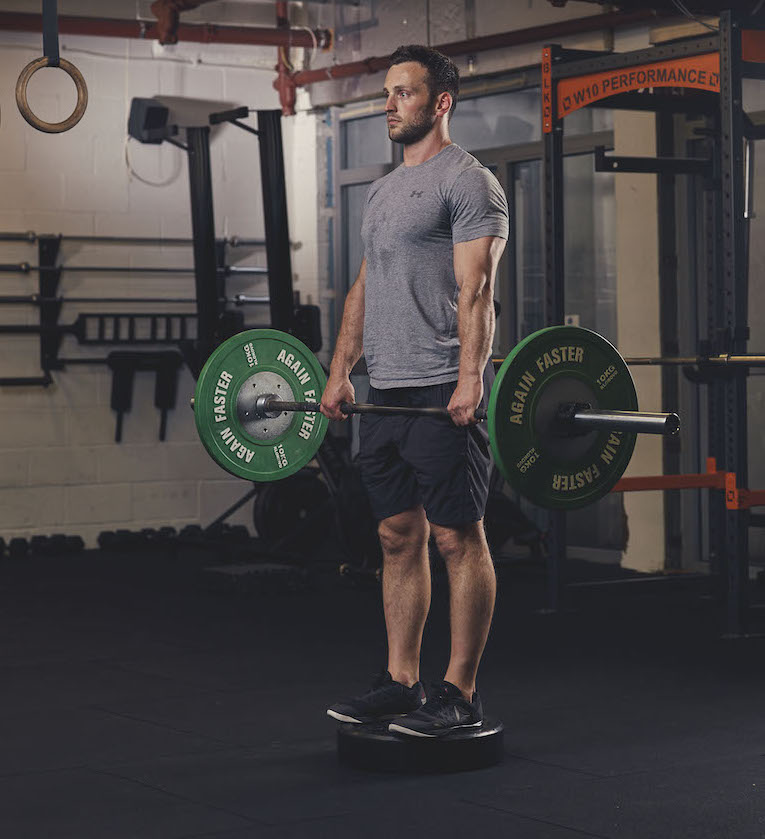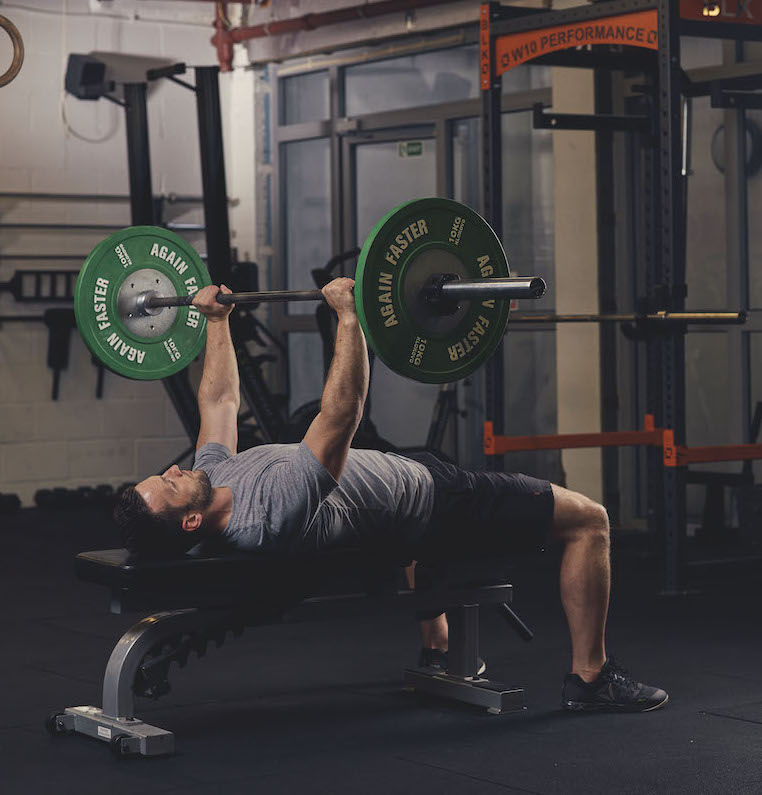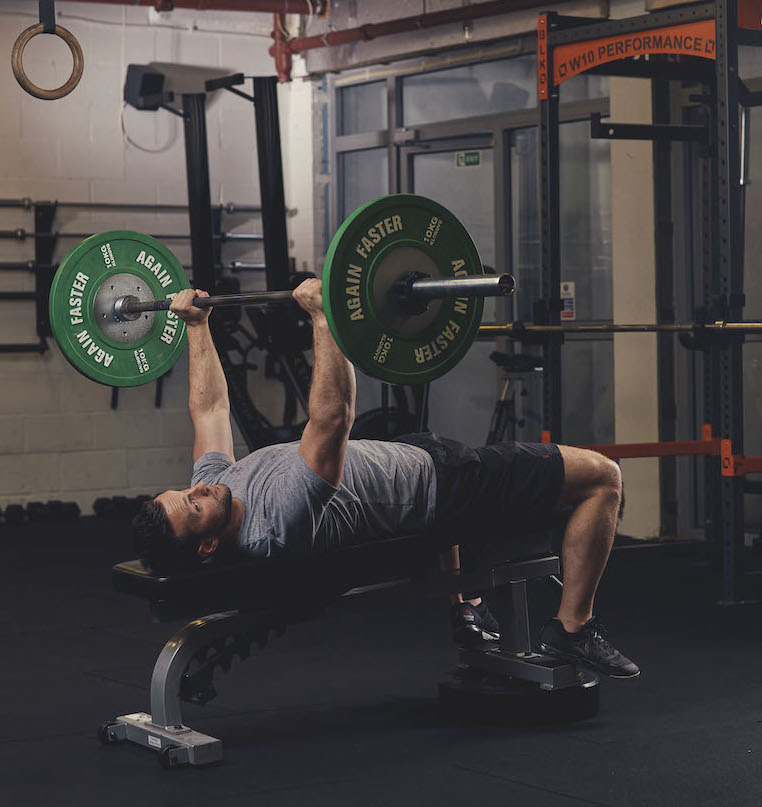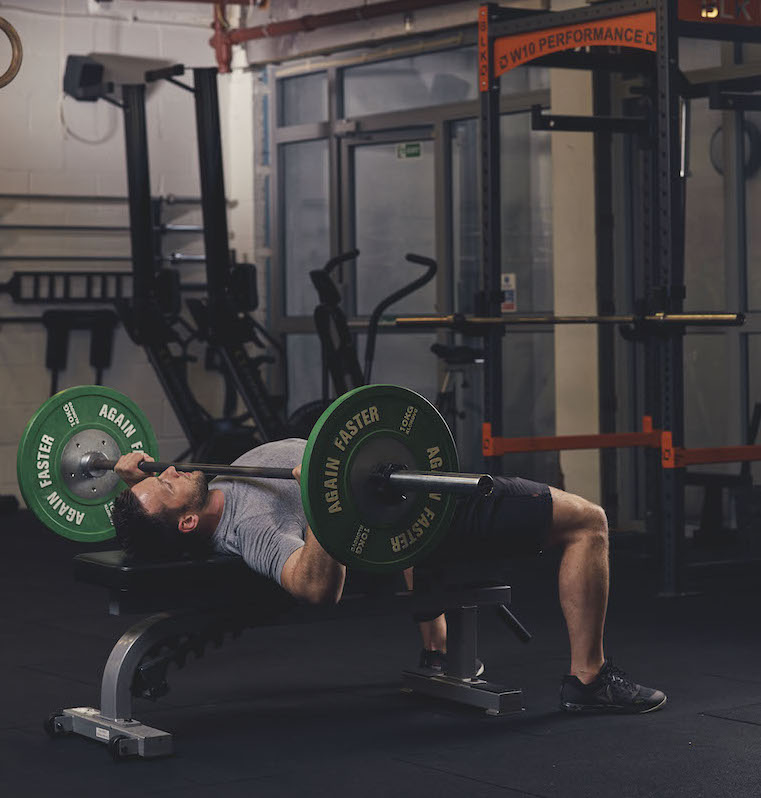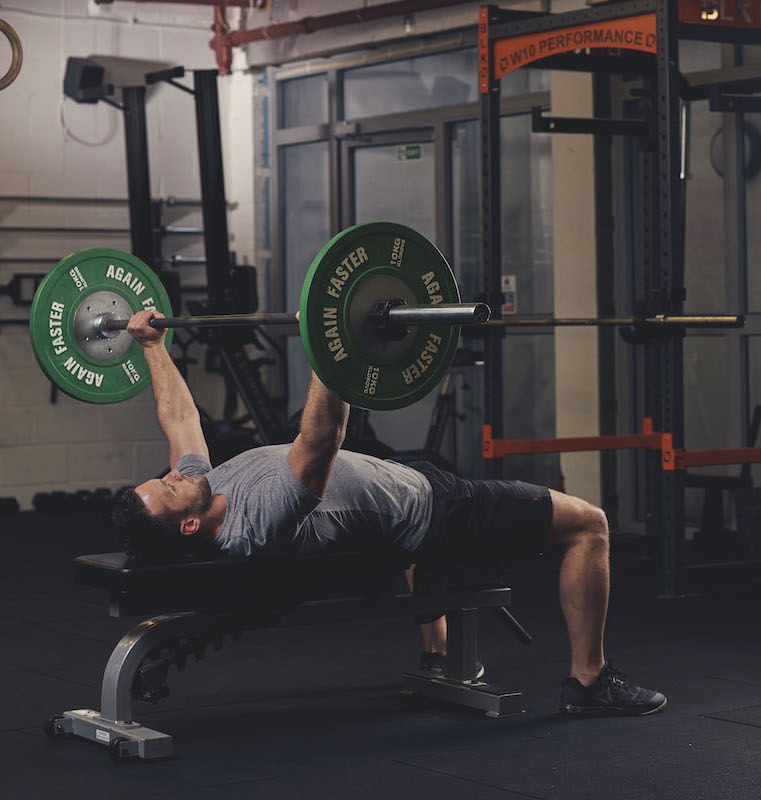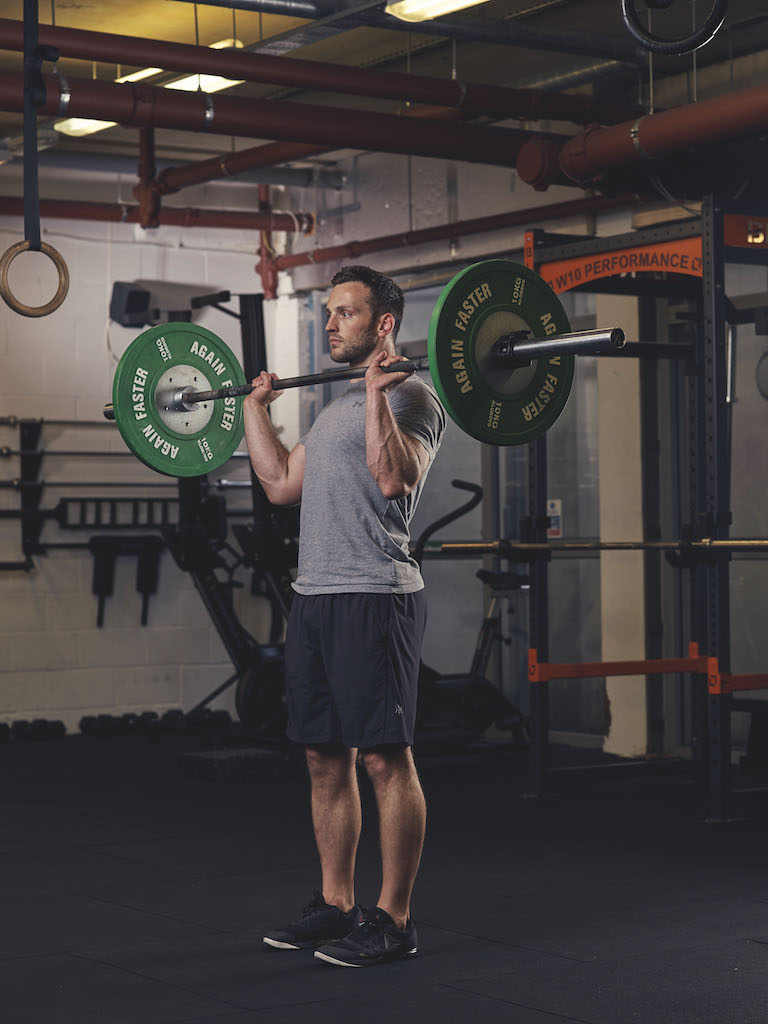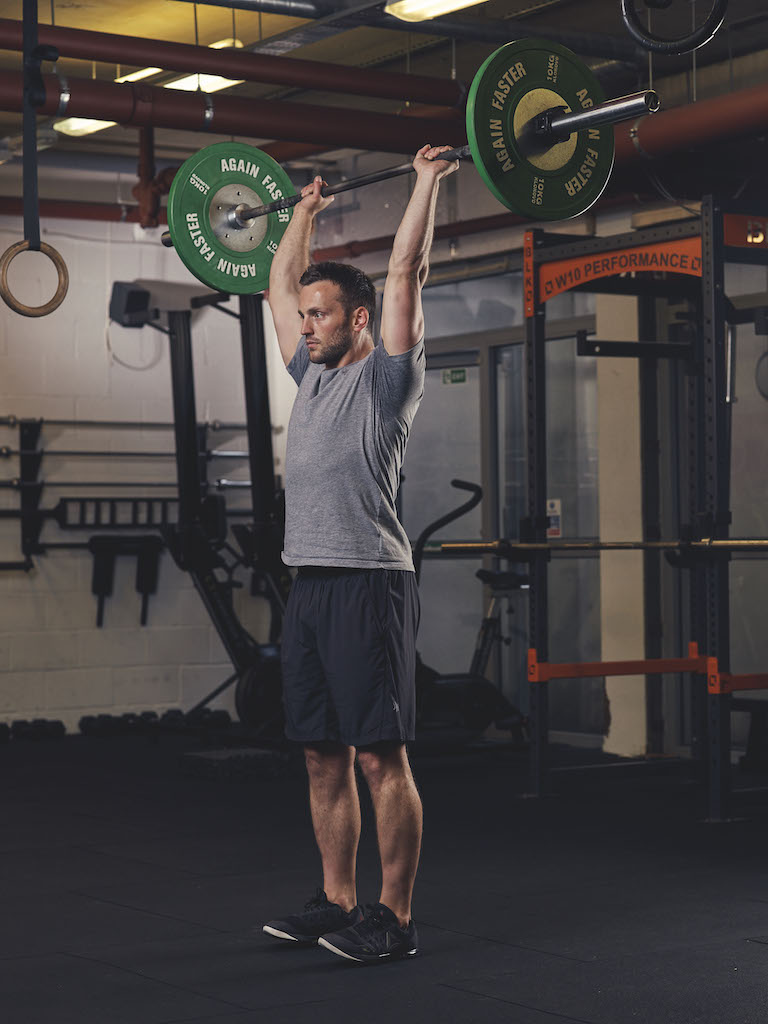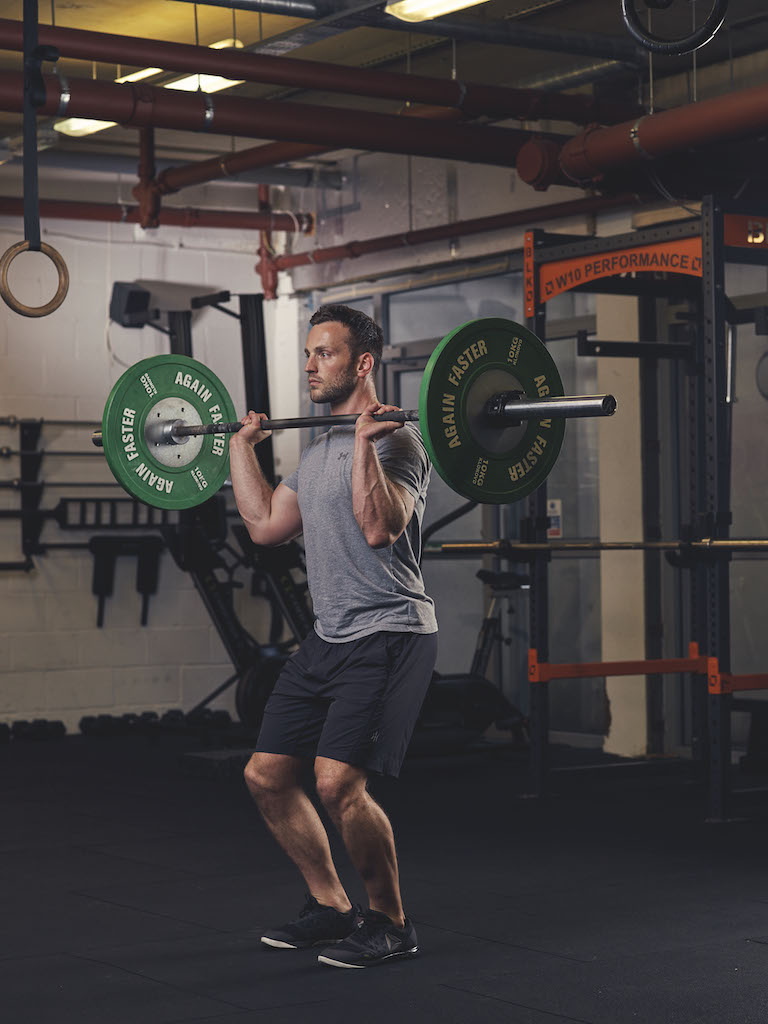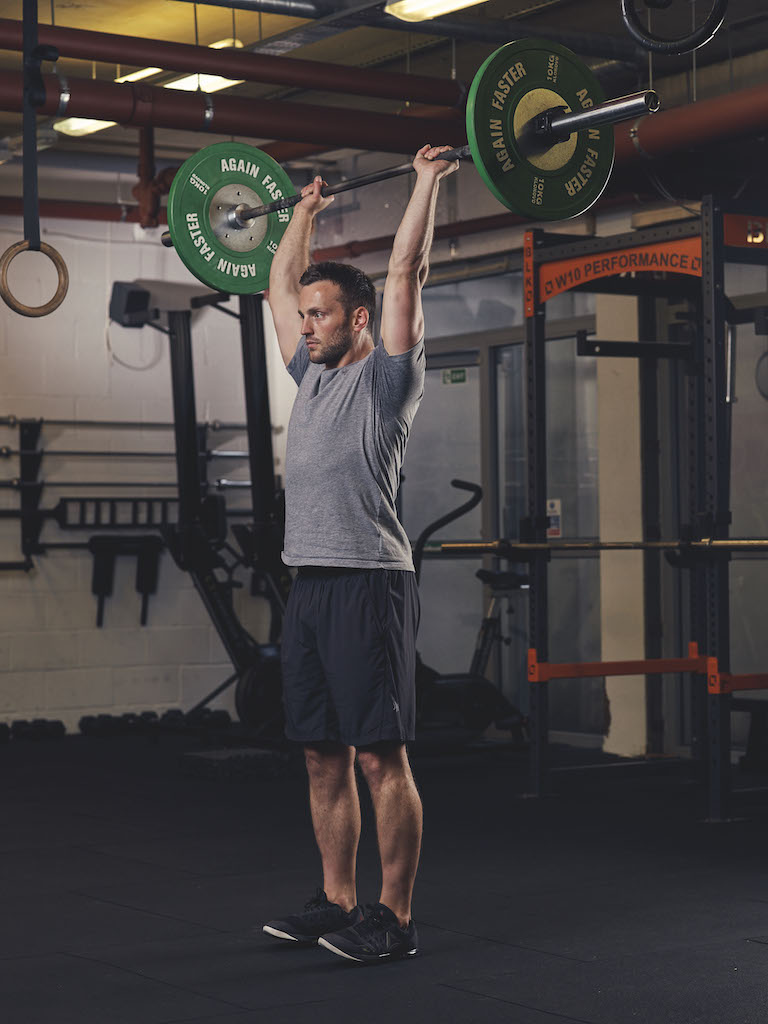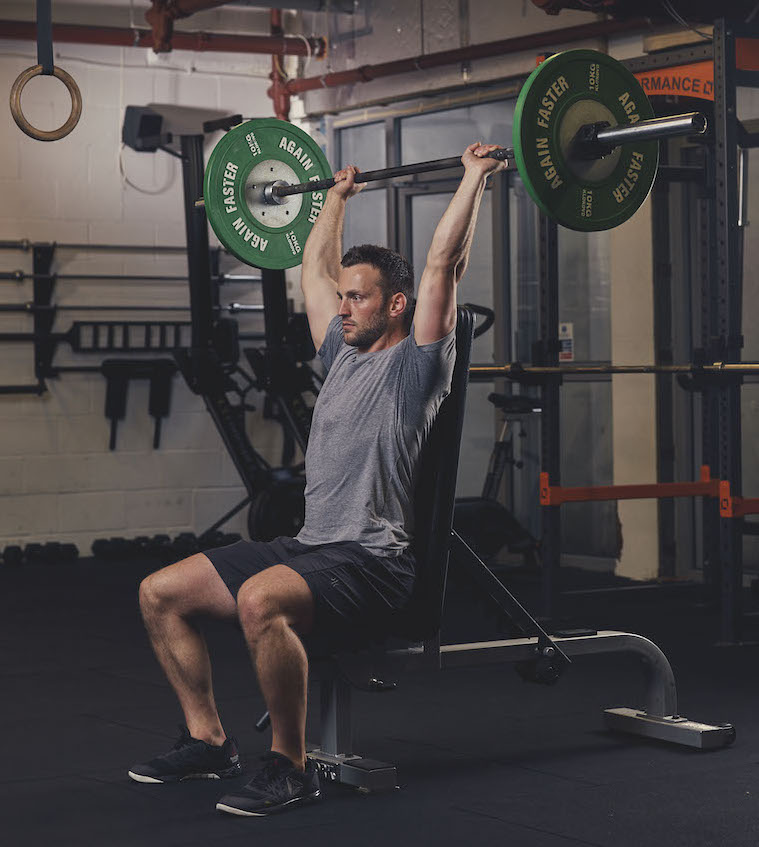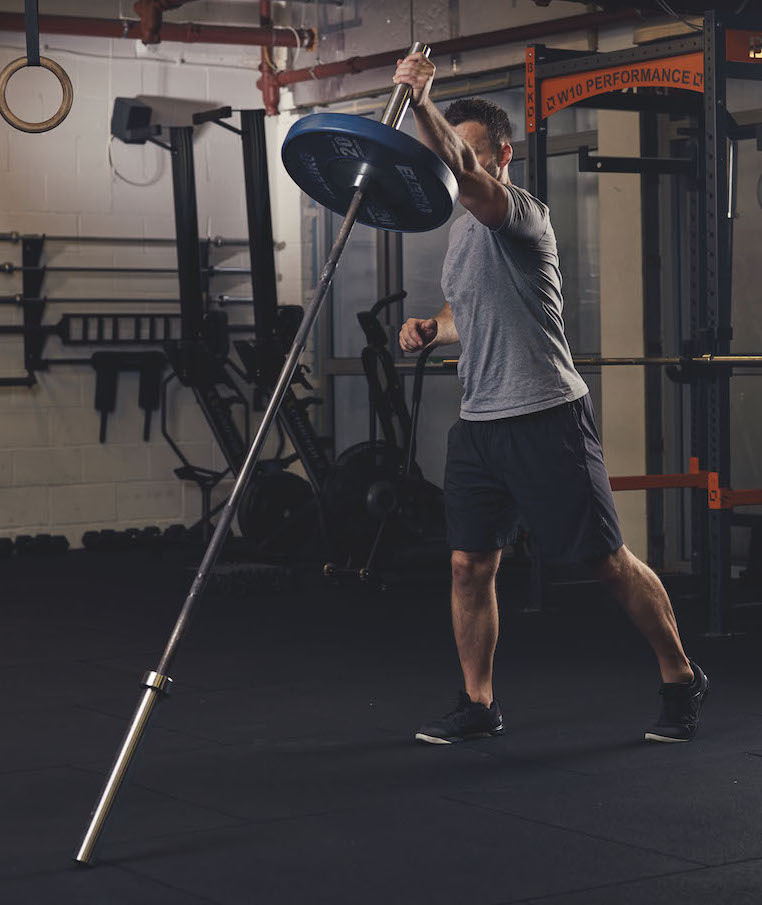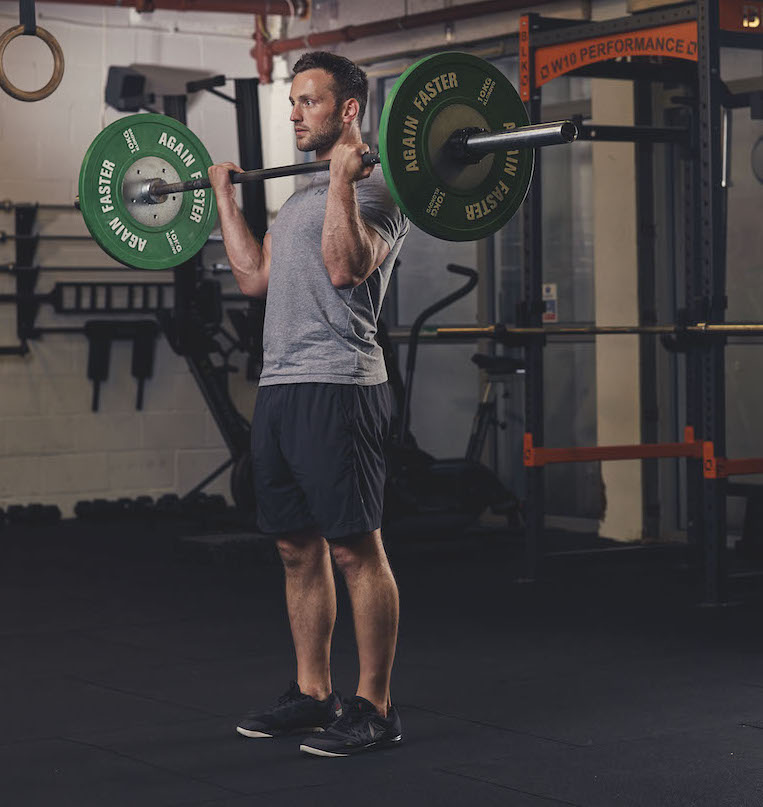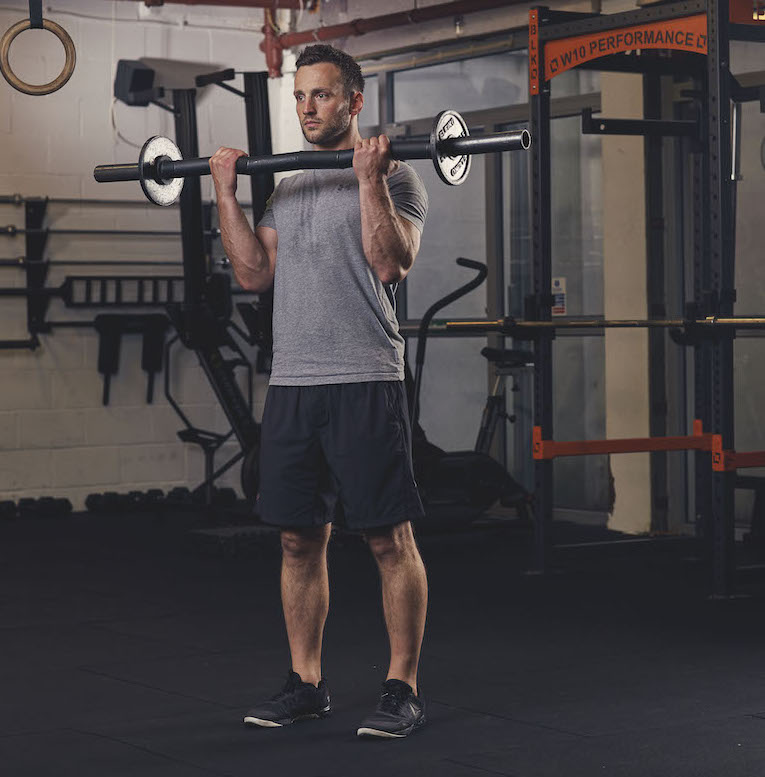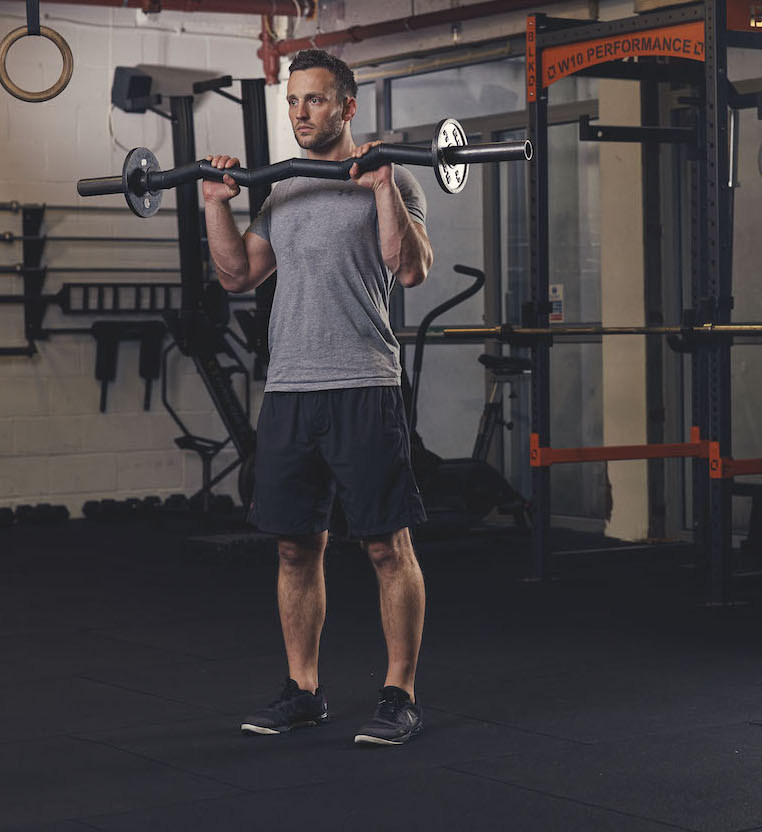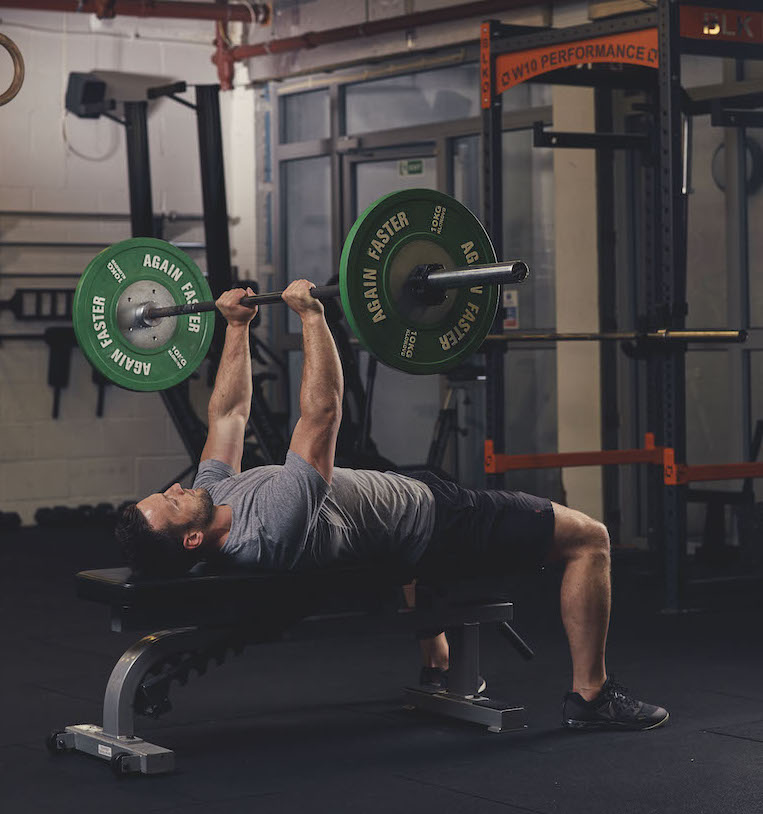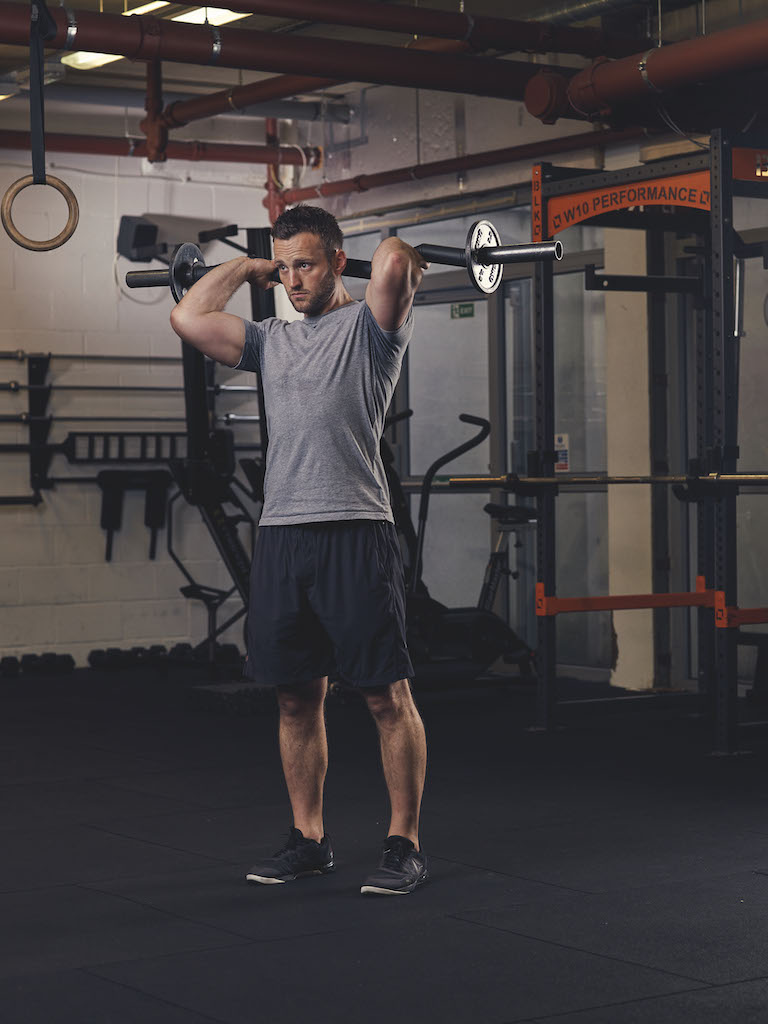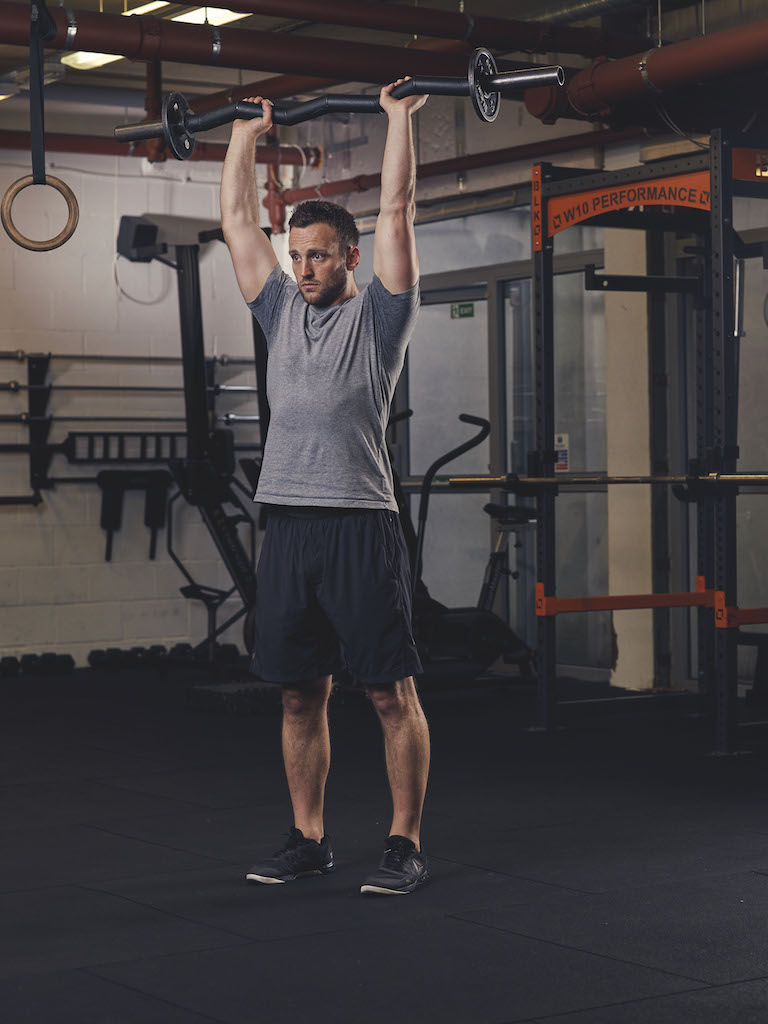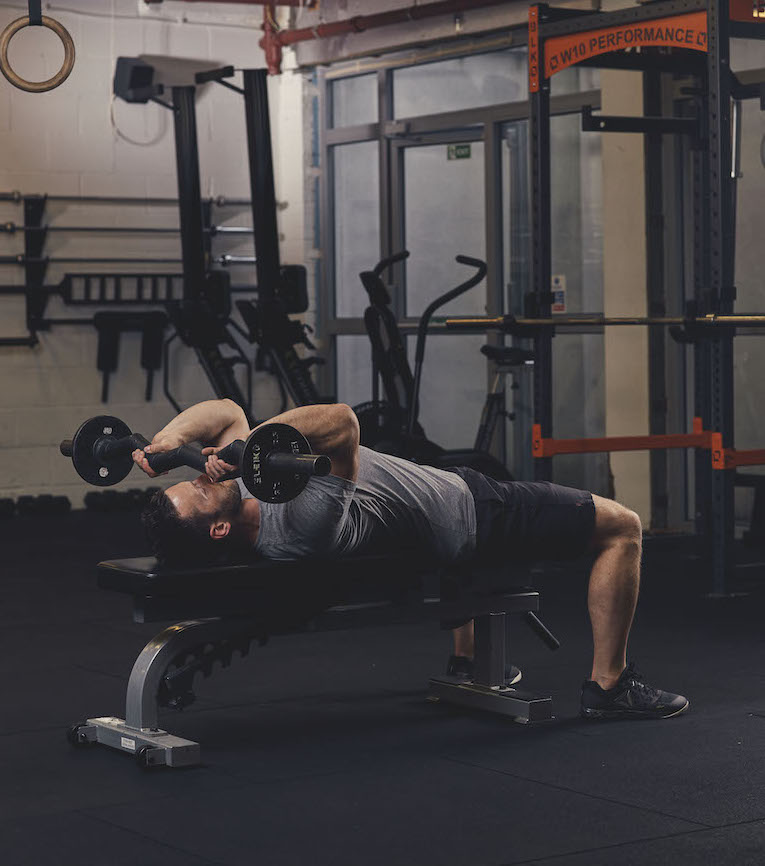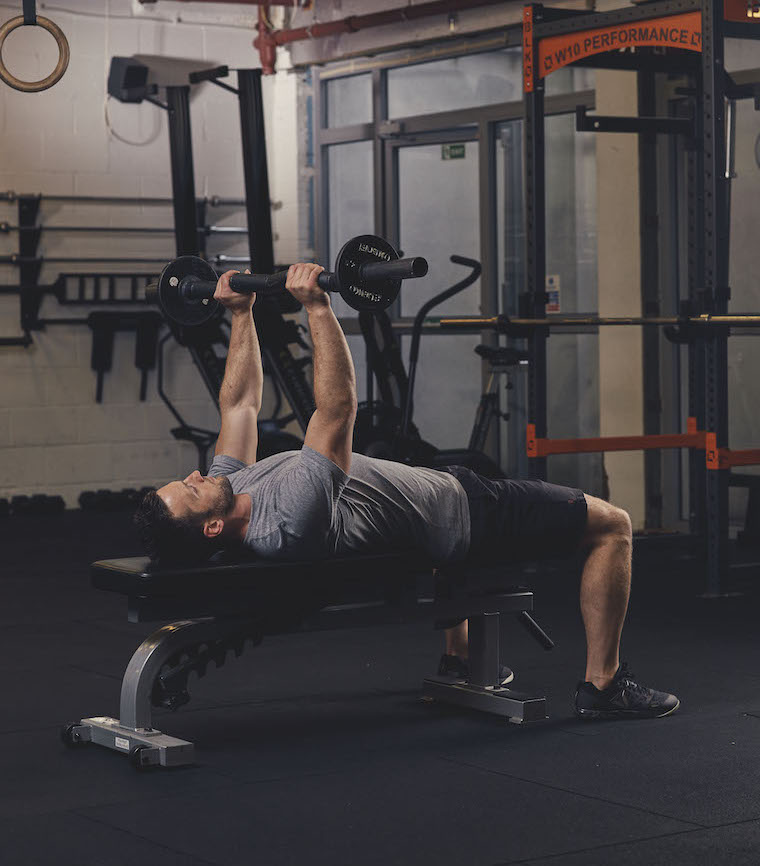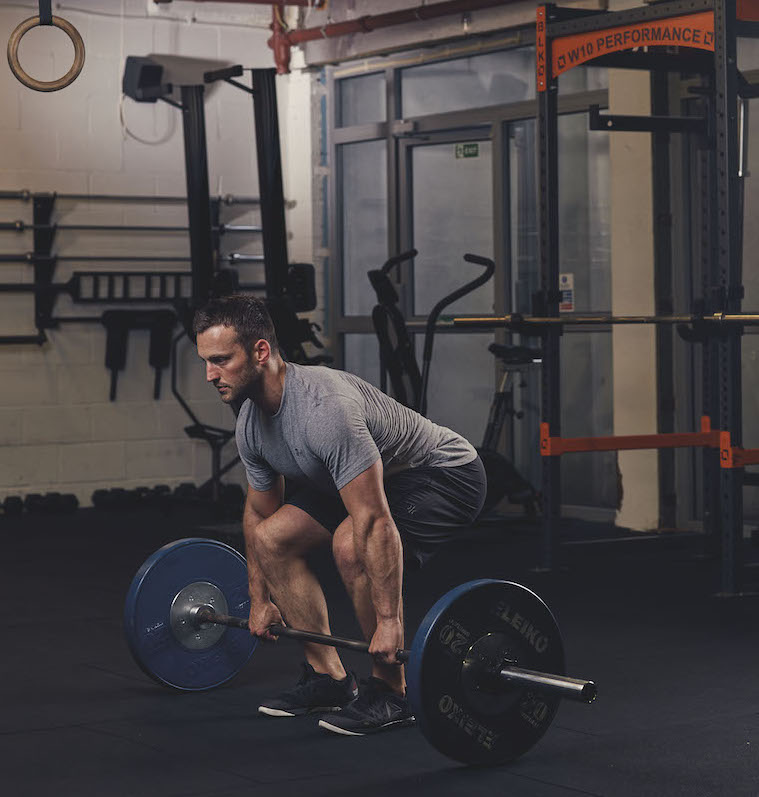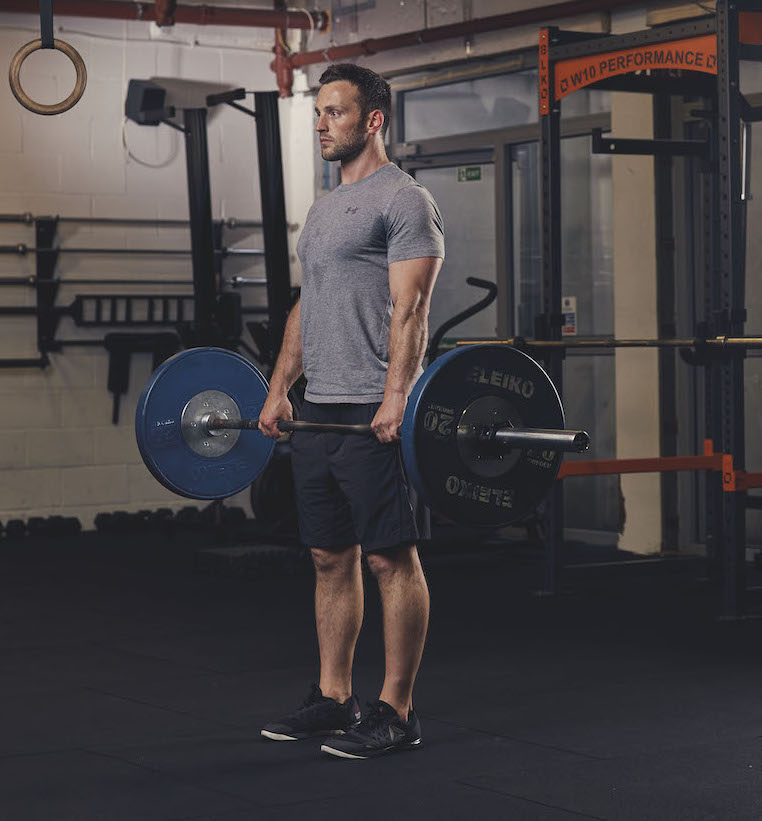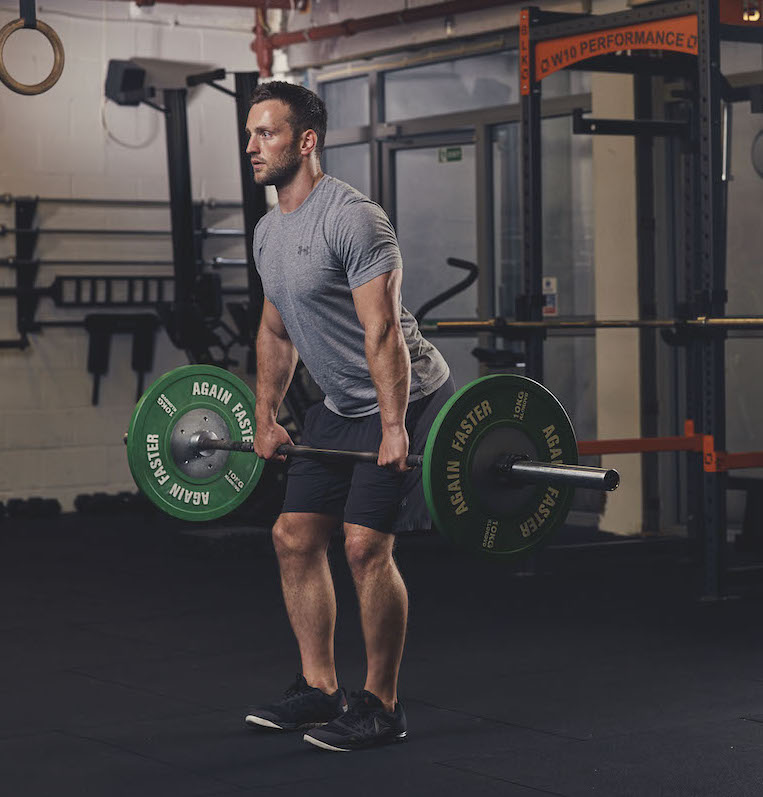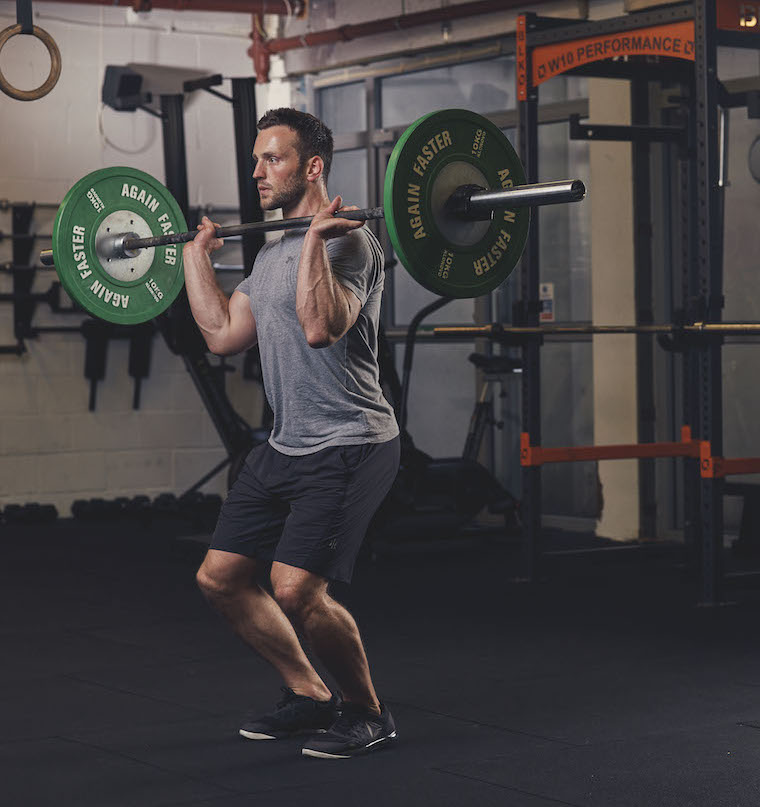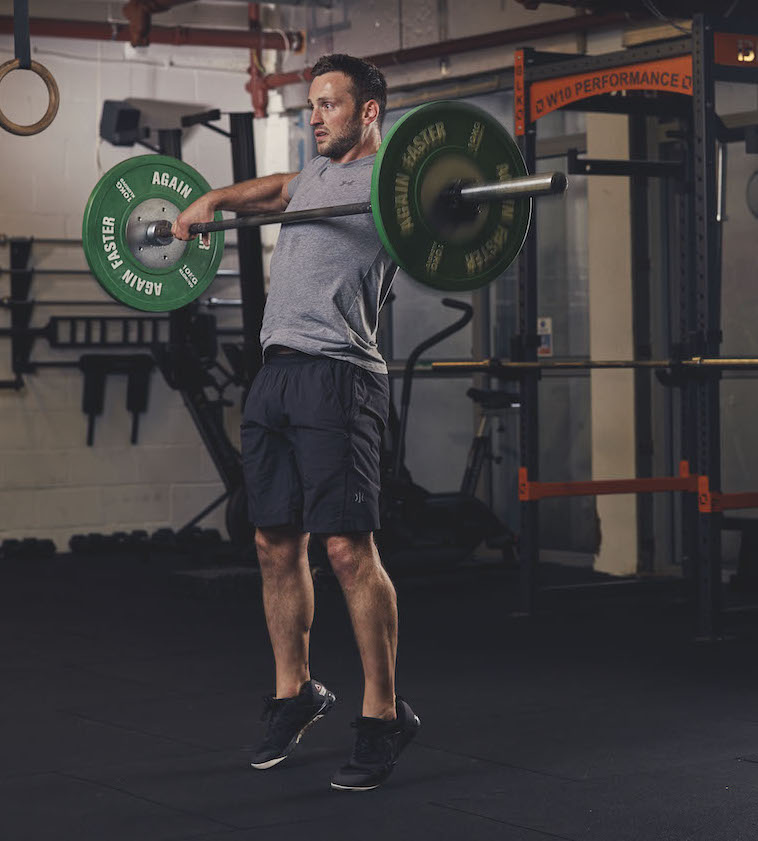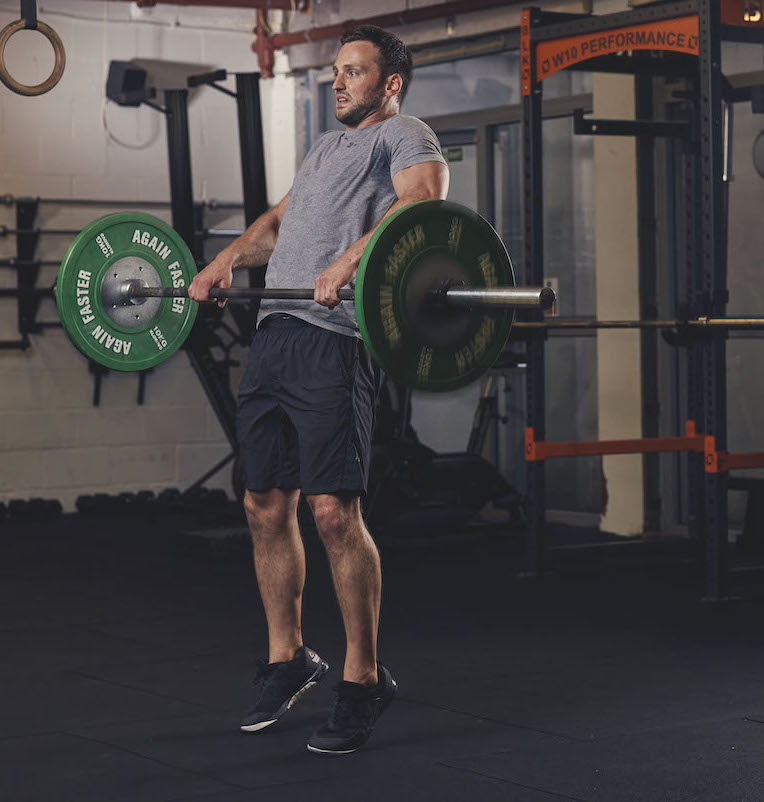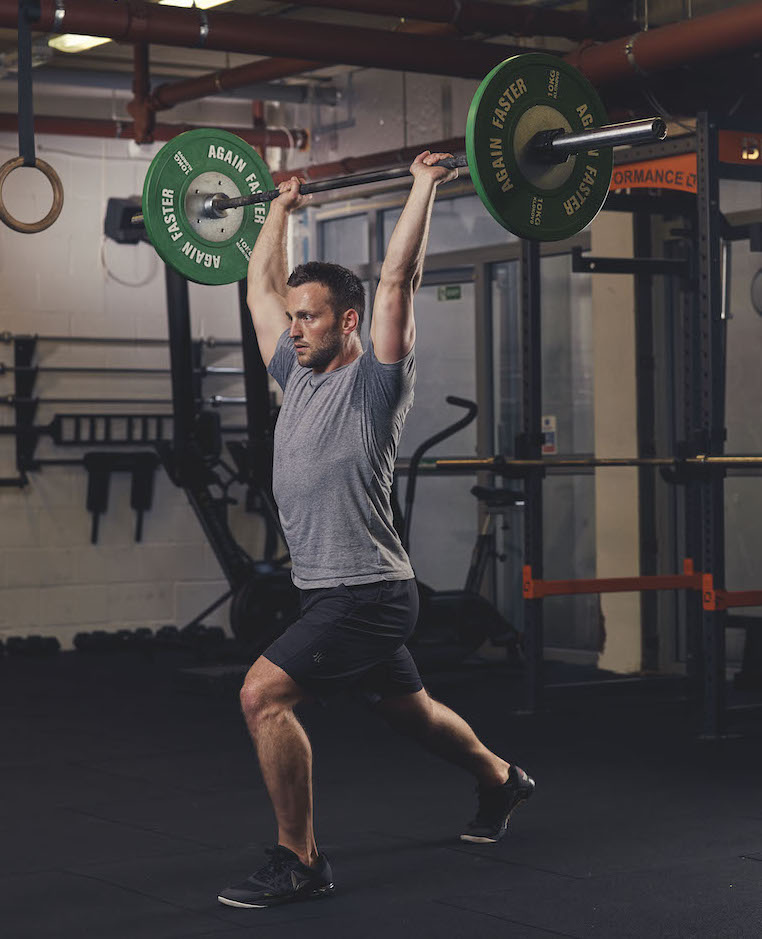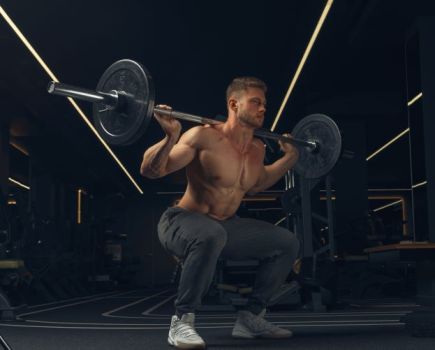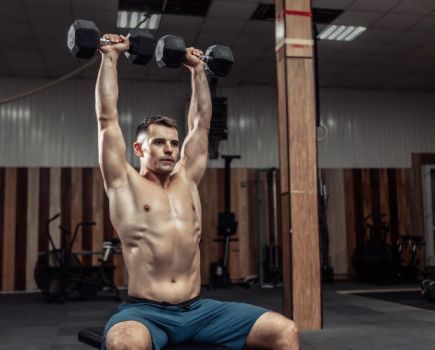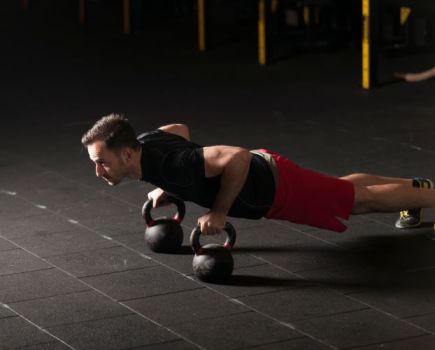The best barbell exercises can help you pack on size and strength, while improving your overall athleticism…
Before you attempt any of these movements, limber up with the best stretching exercises
Barbell moves are among the most efficient for building muscle and strength for one simple reason: they allow you to lift more weight than any other bit of kit.
The barbell is also an incredibly versatile bit of kit, suitable for a range of protocols. Complexes, for example, will build your engine and incinerate body fat – and almost any barbell lift will test your coordination and grip strength.
Getting started with barbell exercises
Where should I start?
It’s a good idea to nail the basics in the big three: bench press, squat and deadlift. They’re the lifts used in competitive powerlifting, and if all you did was those three moves, you’d build a great base of full-body strength.
After that, you’ll want to learn the overhead press and bent-over row for a more balanced physique – plus the power clean, because it’s always a good idea to have an explosive movement in your repertoire.
What about Olympic lifts?
The snatch, and the clean and jerk, are fashionable thanks to CrossFit, and they’re excellent at building full-body explosive power and coordination.
However, since they’re most safely practised in the 1-5 rep range, they’re not ideal for building muscle.
If you want to learn them for sport or fun, you should, but if you find them intimidating you can get similar results by learning less complex explosive variations, like the power snatch or hang clean.
Should I follow a barbell exercise programme?
It’s not a bad idea. There are dozens of barbell lifting templates available, but some of the most popular include Starting Strength (best for beginner lifters), 5/3/1 (a very simple template for intermediate/advanced lifters) and the Texas Method (another intermediate plan that includes more volume and builds more size).
Research your options, commit to one and do it for at least a couple of months, then reassess.
Below, we’ve rounded up the best barbell exercises for every muscle group to help you get started.
Best barbell legs exercises
Power up your glutes and quads with the best barbell leg exercises.
Barbell Squat
Primary target: Glutes, Quads
Why: Squatting big weights will build full-body muscle, thanks to the huge growth hormone hit it prompts. It works not just your legs, but also your core, back and everything else below the bar.
- Take the bar out of the rack and rest it across your upper back.
- Take two big steps back, ending with your feet roughly shoulder-width apart, toes pointing out slightly.
- Keep your spine in alignment by looking at a spot on the floor about two metres in front of you, then sit back and down, as if you’re aiming for a chair.
- Descend until your hip crease is below your knee.
- Keep your weight on your heels as you drive back up.
Barbell Overhead Squat
Primary target: Core | Secondary target: Quads
Why: This is a key test of mobility in your shoulders, ankles and hips. Start adding weight and you’ll find it’s a serious core builder that will also prepare you for the rigours of Olympic lifting.
- Either press a bar overhead with your hands at double shoulder-width, or take it out of a rack.
- Think about pulling the bar apart to keep it stable as you squat down, keeping your weight over your heels.
Barbell Front Squat
Primary target: Quads | Secondary target: Hamstrings
Why: Shifting the bar in front of you moves the emphasis to your quads, but also makes the move safer, because you will be less likely to tip forward and endanger your lower back. If you haven’t got the elbow mobility to do the Olympic lifters’ version (bar on your fingertips), use the variation pictured.
- Take the bar out of the rack with your hands crossed over your chest, supporting it across the front of your shoulders.
- Squat down, keeping your chest up, then drive up through your heels to stand.
Barbell Thruster
Primary target: Glutes | Secondary target: Shoulders
Why: This move won’t let you move as much weight as a push press, but because it combines a squat and press it will send your heart rate soaring, torching through body fat in the process.
- Holding a barbell with a shoulder-width grip, squat down until your thighs are parallel to the floor.
- Drive up quickly, using the momentum to help press the bar overhead.
- Go straight into the next rep.
Barbell Split Squat
Primary target: Quads | Secondary target: Hamstrings
Why: The split squat removes some of the coordination aspects from a heavy lunge, making this a safer variation for beginners. It’s also a good alternative to the squat if you have any issues there.
- Start in a split stance, with one foot in front of the other, holding a bar across your upper back.
- Bend both legs until your trailing knee touches the floor.
- Straighten both legs to return to the start, then go straight into the next rep.
Barbell Lunge
Primary target: Quads | Secondary target: Hamstrings
Why: Working on one leg at a time builds the unilateral strength you need for most sports, and also ensures you don’t have any weaknesses on one side of your body.
- Stand tall with a barbell resting across your upper back.
- Point your elbows behind you to retract your shoulder blades, and keep your back upright and core braced throughout.
- Take a big step forward, lower your body until both knees are bent at 90 degrees, then push off your front foot to return to the start position.
Barbell Romanian Deadlift
Primary target: Hamstrings | Secondary target: Lower back
Why: This deadlift variation shifts the emphasis to your hamstrings, making it an ideal accessory exercise to the normal deadlift. Do a couple of sets after a heavy deadlift.
- Stand tall with your feet shoulder-width apart, holding a barbell with an overhand grip just outside your thighs.
- Keeping a slight bend in your knees, hinge from the hips and lower the bar down the front of your shins.
- Reverse the move back to the start by pushing your hips forward.
Reverse Lunge
Primary target: Glutes | Secondary target: Hamstrings
Why: Stepping back instead of forward shifts the emphasis to your glutes, but also makes the lunge slightly safer, because it’s easier to stop your front knee from wobbling off-line. If you’re fatigued, do these.
- Stand tall with a barbell resting across your upper back.
- Point your elbows back to retract your shoulder blades, and keep your back upright and core braced throughout.
- Take a big step back and lower until your back knee touches the floor, then press off your back foot to return to the start position.
Glute Bridge
Primary target: Glutes | Secondary target: Hamstrings
Why: This variation of the bodyweight hip thrust allows you to move big weights for increased glute activation, and it will teach your glutes to ‘fire’ during squat variations. Do it once a week, ideally on a different day to your squats.
- Position yourself with a barbell across your hips, your shoulders on the floor and your feet close to your glutes.
- It’s OK to use a barbell pad, or wrap the bar in a towel.
- Raise your hips until they’re in line with your shoulders. Hold for a second in the top position, then lower.
Best barbell back exercises
Target your upper and lower back muscles with the best barbell back exercises.
Barbell Bent-Over Row
Primary target: Upper back | Secondary target: Biceps
Why: It’s the best back-builder bar none, but it’ll also even out your pressing and give you a stable base for pushing-based moves.
- Hold the bar with a shoulder-width grip, bending your knees slightly.
- Bend at the hips until you’re at a roughly 45-degree angle to the floor.
- Pull the bar up to touch your sternum, then lower under control. If you’re moving your upper body to shift the bar, the weight is too heavy.
Barbell Shrug
Primary target: Traps
Why: One of the few moves that directly targets your traps is also one of the best excuses to use lifting straps. While you’ll work your grip without them, using straps will allow you to work your traps harder. It’s also a good idea to take the bar out of a rack, so you can up the weight.
- Stand tall holding a barbell with a shoulder-width grip.
- Shrug your shoulders, trying to raise your traps to your ears.
- Pause at the top, then lower.
- Straight up and down is the key – don’t roll your shoulders.
Barbell Snatch-Grip Deadlift
Primary target: Upper back | Secondary target: Glutes
Why: Because your grip is wider in this move, you’ll need to move the bar through a larger range of motion, increasing the growth hormone hit. It will also prepare you for Olympic lifting.
- Hold a barbell with your hands roughly double shoulder-width apart.
- Push through your heels and keep your chest up as you drive forward with your hips to lift the bar.
Barbell Reverse-Grip Bent-Over Row
Primary target: Upper back | Secondary target: Biceps
Why: This rowing variation targets the biceps much more than the traditional row. Lifters with elbow or wrist mobility issues might find it a bit more forgiving than the usual barbell row.
- Using a palms-away grip – as in a biceps curl – hold the bar with your hands at shoulder-width, bending your knees slightly.
- Bend at the hips until you’re at a roughly 45-degree angle to the floor.
- Pull the bar up to touch your sternum, then lower under control.
EZ-Bar Pull-Over
Primary target: Lats | Secondary target: Triceps
Why: This staple of Arnold-era bodybuilding works your chest as well as your lats and triceps. Old-school lifters used to do it after squats, theorising that it expands the chest, but you should do it on upper-body day.
- Lie on a flat bench, holding an EZ-bar with an overhand, shoulder-width grip.
- Press the bar upwards, then reach back over your head towards the floor until you feel a stretch in your lats.
- Pull the bar back over your head, until it’s above your chest again.
Barbell Deficit Deadlift
Primary target: Upper back | Secondary target: Glutes
Why: Lifting from a deficit – an artificially lower start position – will fix any weakness in your normal deadlift, forcing you to keep a flat back and engaged shoulders to get the bar off the ground.
- Stand on a weight plate or low box and grasp the bar.
- Engage your shoulders and take the strain, then lift the bar by driving your hips forward, keeping a flat back.
Best barbell chest exercises
Fire up your pecs with the best barbell chest exercises.
Barbell Bench Press
Primary target: Chest | Secondary target: Triceps
Why: It’s a classic for a reason – a properly executed bench press (your feet should be pressing into the floor) will tax your whole body and allow you to use heavy weights to maximise upper-body development. Ensure your form is correct to avoid injury and maximise growth.
- Take a grip slightly wider than shoulder-width and squeeze your lats together, to create a pressing platform before you take the bar out of the rack.
- Watch the ceiling, not the bar, to ensure you’re pressing in the same line each time – then lower the bar to your chest, aiming to brush your t-shirt without bouncing.
- Press up powerfully, pause at the top, then begin your next rep.
Barbell Incline Bench Press
Primary target: Chest | Secondary target: Triceps
Why: Setting the bench to an incline will mean you need to reduce the weight, but it’ll hit your chest from a new angle, and build more functionally transferable strength for sports like rugby or boxing than the traditional flat bench does.
- Lie on a bench set at a 45-degree incline, holding a bar over your chest with your grip just wider than shoulder-width.
- Lower the bar until it’s touching your chest, then press it back up.
Barbell Decline Bench Press
Primary target: Chest | Secondary target: Triceps
Why: You’ll hit your chest from a different angle, targeting the lower part of your pecs for all-round development.
- Lie on a decline bench, so your head is lower than your legs, holding a bar over your chest with your grip just outside shoulder-width.
- Lower the bar until it touches your chest, then press it back up.
Barbell Guillotine Bench Press
Primary target: Chest | Secondary target: Triceps
Why: Yes, it sounds – and looks – scary, but for pure chest development, bodybuilders agree that the guillotine press is invaluable. It takes some shoulder stability though, so make sure your rotator cuffs are in good shape before you try it – and use a spotter!
- Lie on a bench holding a bar with your hands just wider than shoulder-width.
- Keeping your elbows tucked, lower the bar until it’s just above your neck, then press back up. Keep the reps controlled.
Best barbell shoulder exercises
Get your shoulders moving with the best barbell shoulder exercises.
Barbell Overhead Press
Primary target: Shoulders | Secondary target: Triceps
Why: The strict overhead press builds full-body muscle and coordination, bringing your abs into the equation to stabilise the weight overhead. The ‘military’ version – done with your heels together – is even tougher.
- With your feet shoulder-width apart, position a bar on your upper chest, gripping it with hands just wider than shoulder-width apart.
- Brace your abs, glutes and quads as you press the bar directly overhead.
Barbell Push Press
Primary target: Shoulders | Secondary target: Triceps
Why: Adding an explosive drive to the strict press mimics real-life movement (imagine putting a heavy bag into an overhead locker) and allows you to shift more weight than a strict press, while building full-body power.
- Set up in the same position as the overhead press.
- Drop into a quarter-squat, then press the bar overhead as explosively as possible, using the momentum to drive the bar upwards.
- Do it properly, and you shouldn’t be pushing the bar until it’s almost over your head.
Barbell Seated Overhead Press
Primary target: Shoulders | Secondary target: Triceps
Why: In contrast to the push press, the seated version takes any leg drive out of the move, shifting all the emphasis to your shoulders.
- Sit on an upright bench with a barbell on your upper chest, gripping it with hands shoulder-width apart.
- Keep your chest upright and your core muscles braced.
- Press the bar directly upwards until your arms are extended overhead.
Single-Arm Landmine Press
Primary target: Shoulders | Secondary target: Obliques
Why: Using this move, so called because of the bit of kit sometimes used to slot the barbell into, allows you to build strength from unusual angles, including the rotational power you’ll need to throw a punch or a ball.
- Wedge a barbell into a landmine attachment.
- Hold one end and twist on your back foot as if you’re throwing a punch, then push the barbell away.
- Do all your reps on one side, then switch to the other.
Best barbell biceps exercises
These are the best barbell exercises for targeting your biceps.
Barbell Biceps Curl
Primary target: Biceps
Why: This classic move will let you shift heavier weight than the dumbbell version. Keep your shoulders pinned back and focus on only hinging at the elbow joint to lift the weight.
- Stand tall with your shoulders back and feet close together, holding a barbell with an underhand grip.
- Keeping your elbows tucked into your sides, curl the bar up towards your chest, stopping just before your forearms reach vertical.
- Lower back slowly to the start.
- Avoid rocking back and forth to generate momentum, which takes the emphasis away from the biceps.
EZ-Bar Biceps Curl
Primary target: Biceps
Why: The EZ-bar combines the benefits of dumbbells and a barbell. Shifting the grip position makes things easier on your elbows, while still letting you use heavy weights.
- Stand tall with your shoulders back and feet close together, holding an EZ-bar with an underhand grip with your hands just outside your hips.
- Keeping your elbows tucked into your sides, curl the bar up towards your chest, stopping just before your forearms reach vertical.
- Lower slowly back to the start.
EZ-Bar Reverse Curl
Primary target: Biceps | Secondary target: Forearms
Why: Like the standard EZ-bar curl, this move is gentle on your wrists and elbows, but hits your biceps from a different angle while also testing your forearms.
- Stand tall with your shoulders back and feet close together, holding an EZ-bar with an overhand grip with your hands just outside your hips.
- Keeping your elbows tucked into your sides, curl the bar up towards your chest, stopping just before your forearms reach vertical.
- Avoid rocking to generate momentum.
Best barbell triceps exercises
Below, we’ve rounded up the best barbell exercises for targeting your triceps.
Barbell Narrow-Grip Bench Press
Primary target: Triceps | Secondary target: Chest
Why: Benching with a narrow grip shifts the emphasis to your triceps while safeguarding your shoulders. It’s a good way to work on weakness in your regular bench press, or just get a bit more work in on arms day.
- Grip the bar with your hands roughly shoulder-width apart, then bring it down to your chest, keeping your elbows tucked into your sides.
- Pause, then press it back to the starting position.
EZ-Bar Triceps Extension
Primary target: Triceps | Secondary target: Core
Why: This move lets you target your triceps while engaging your core muscles to stay upright, building full-body coordination. Because you’re using an EZ-bar, you can use serious weight with reduced strain on your elbows.
- Stand tall, holding an EZ-bar above you with straight arms.
- Slowly lower the bar towards the back of your head by bending your elbows, keeping your upper arms as still as possible.
- Without arching your back, slowly return the bar to the start position by straightening your arms.
EZ-Bar Skullcrusher
Primary target: Triceps
Why: This move shifts the focus entirely to your triceps, while staying easier on your elbows. Keep the weight manageable, or risk finding out why it gets its name…
- Lie on a flat or decline bench, holding an EZ-bar above you with straight arms.
- Slowly lower the bar towards the top of your head by bending your elbows, keeping your upper arms as still as possible.
- Without arching your back, slowly return the bar to the start position by straightening your arms.
Best barbell full-body exercises
Get your whole body pumping with the best barbell full-body exercises.
Barbell Deadlift
Primary target: Full body
Why: Arguably the most effective full-body move. if this was all you did, you’d still build enviable arms and a core of steel. It will flood your body with testosterone and growth hormone, and let you lift heavier than almost any other move. A double-bodyweight deadlift is the goal.
- Standing with your feet shoulder-width apart, grasp the bar with your hands just outside your legs.
- Lift the bar by driving your hips forward, keeping a flat back.
- Lower the bar under control.
Barbell Hang Clean
Primary target: Full body
Why: Starting the clean from a hang position makes it even simpler, making it ideal for beginner lifters, or as part of a fat-burning barbell complex. Experienced lifters will also use this variation to build explosiveness.
- Start by holding the bar with a shoulder-width grip in front of your thighs.
- Squat down slightly, then drive through your heels to explode upwards, using the momentum to help pull it up to chest height and catching it on your chest.
- Pause for a second, then lower the bar back to the start position.
Barbell Clean Pull
Primary target: Full body
Why: This is an excellent exercise for targeting your hamstrings, which are underdeveloped in most men – particularly those with desk jobs.
- Set up in the same starting position as a deadlift.
- Now extend at the hips to explosively lift the bar, keeping it close to your body at all times.
- The momentum should carry the bar to around chest height, with shoulders shrugged slightly at the top of the movement.
Barbell Snatch
Primary target: Full body
Why: The most explosive move in lifting sees you take the bar from the floor to overhead in one movement, and builds huge amounts of power. It’s one of the most complex moves to learn and, because shifting big weights is as much about refining your technique as building strength, it’s a good challenge if you’re bored with your regular routine – and, of course, it’s a hugely satisfying move to nail successfully. Make sure you’re comfortable doing overhead squats before you do this one, though.
- Start with the bar on the floor, gripping it with your hands roughly double shoulder-width apart – your feet should be slightly closer than shoulder-width, with your heels pointing inward.
- Drive through your heels to lift the bar, then – as it reaches your hips – drive forward to bounce it off your upper thighs, giving it more momentum as you pull it upward.
- Drop into an overhead squat and catch the bar overhead, then stand up to finish the move.
Barbell Clean and Jerk
Primary target: Full body
Why: This move (one of the two used in Olympic competition) technically comes in two parts. First there’s the clean, which involves lifting the bar and then dropping underneath it. Then there’s the jerk: an explosive drive where you catch it overhead.
- Start with the barbell on the floor.
- Drive through your heels to lift, then explode up as it passes your knees, using momentum until you can drop underneath it into a squat, catching it across your shoulders.
- Stand, then do a quarter squat to gather momentum and drive up explosively, pressing the bar overhead.
- Drop into a lunge as it goes upwards, catching the bar with straight arms.
- Bring your feet together and stand upright to complete the rep.

